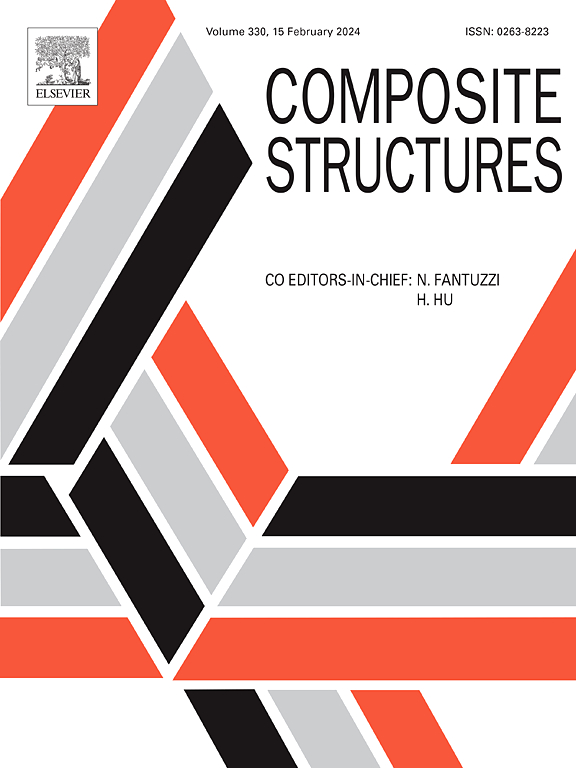压电复合材料结构的三分量体积坐标系广义混合元
IF 6.3
2区 材料科学
Q1 MATERIALS SCIENCE, COMPOSITES
引用次数: 0
摘要
本文将三分量体积坐标系与非协调广义混合单元相结合,建立了一种分析压电复合材料结构静力特性的单元。该单元采用体积坐标作为局部坐标,显著缓解了传统等参单元在网格畸变下局部坐标与笛卡尔坐标的病态关系,从而降低了单元对网格畸变的敏感性。进一步避免了雅可比矩阵逆矩阵的计算。另一方面,该单元保留了混合方法的优点,可以同时考虑位移和应力边界条件,从而便于对有限元模型进行客观合理的描述。此外,采用部分混合法分别求解层间面内应力和面外应力,解决了层间面内应力的不连续问题。数值算例表明,该单元在压电复合材料结构分析中具有良好的性能。本文章由计算机程序翻译,如有差异,请以英文原文为准。
A three-component volume coordinate system generalized mixed element for piezoelectric composite structures
This paper combines the three-component volume coordinate system with the non-conforming generalized mixed element to develop an element for analyzing the static characteristics of piezoelectric composite structures. The element adopts volume coordinates as local coordinates, significantly alleviating the ill-conditioned relationship between local and Cartesian coordinates in traditional isoparametric elements under mesh distortion, thus reducing the sensitivity of the element to mesh distortion. Furthermore, the calculation of the Jacobian inverse matrix is avoided. On the other hand, this element retains the advantage of the mixed method that enables the concurrent consideration of displacement and stress boundary conditions, thereby facilitating an objective and rational description of the finite element model. Additionally, the discontinuity of in-plane stresses between layers is resolved by using a partial mixed method to separately solve the in-plane and out-of-plane stresses. Numerical examples demonstrate that the proposed element has excellent performance in the analysis of piezoelectric composite structures.
求助全文
通过发布文献求助,成功后即可免费获取论文全文。
去求助
来源期刊

Composite Structures
工程技术-材料科学:复合
CiteScore
12.00
自引率
12.70%
发文量
1246
审稿时长
78 days
期刊介绍:
The past few decades have seen outstanding advances in the use of composite materials in structural applications. There can be little doubt that, within engineering circles, composites have revolutionised traditional design concepts and made possible an unparalleled range of new and exciting possibilities as viable materials for construction. Composite Structures, an International Journal, disseminates knowledge between users, manufacturers, designers and researchers involved in structures or structural components manufactured using composite materials.
The journal publishes papers which contribute to knowledge in the use of composite materials in engineering structures. Papers deal with design, research and development studies, experimental investigations, theoretical analysis and fabrication techniques relevant to the application of composites in load-bearing components for assemblies, ranging from individual components such as plates and shells to complete composite structures.
 求助内容:
求助内容: 应助结果提醒方式:
应助结果提醒方式:


